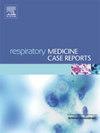Recurrent “transient ischemic attacks” caused by pulmonary arteriovenous malformation
IF 0.7
Q4 RESPIRATORY SYSTEM
引用次数: 0
Abstract
Pulmonary arteriovenous malformations (PAVMs) are abnormal, direct connections between a pulmonary artery and pulmonary vein that can lead to severe neurologic complications including ischemic stroke. This case report describes a 39-year-old woman who presented with recurrent transient ischemic attacks (TIAs). Extensive clinical evaluation revealed PAVM as the underlying cause. Following successful embolization of the PAVM, the patient did not experience further TIAs. This case highlights the importance of considering PAVMs in the differential diagnosis of recurrent TIAs, particularly in patients without traditional risk factors for cerebrovascular events.
由肺动静脉畸形引起的复发性“短暂性脑缺血发作”
肺动脉动静脉畸形(pavm)是一种异常的肺动脉和肺静脉之间的直接连接,可导致严重的神经系统并发症,包括缺血性中风。这个病例报告描述了一个39岁的女性谁提出了反复的短暂性脑缺血发作(TIAs)。广泛的临床评估显示PAVM是根本原因。在成功栓塞PAVM后,患者没有经历进一步的tia。该病例强调了在复发性tia的鉴别诊断中考虑pavm的重要性,特别是在没有脑血管事件传统危险因素的患者中。
本文章由计算机程序翻译,如有差异,请以英文原文为准。
求助全文
约1分钟内获得全文
求助全文
来源期刊

Respiratory Medicine Case Reports
RESPIRATORY SYSTEM-
CiteScore
2.10
自引率
0.00%
发文量
213
审稿时长
87 days
 求助内容:
求助内容: 应助结果提醒方式:
应助结果提醒方式:


